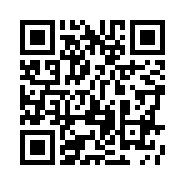It seems the buzz in marketing these days is all about apps, QR codes and mobile websites. For the entrepreneur or small-business person, these “high-tech” tools can feel mystifying and overwhelming. What’s the best approach?
Educate yourself about these new ways to communicate with consumers and then determine if they are a good fit for your business. As you think about how your business functions in today’s world, you may find that technology is the best way to reach your target audiences. In fact, Nielsen forecasts that by this December, one in two Americans will have a smartphone.
Before you start throwing these terms around and hiring a team of people to get you on the bandwagon, take a moment to learn how they work.
QR CODES
A QR, or quick response, code is an indecipherable black-and-white box (pictured at right) that acts as a shortcut to a piece of information that can be easily viewed on a smartphone or other Web-enabled mobile device.
These boxes are two-dimensional barcodes and can be seen in storefront windows, in magazine advertisements, on product packaging and on other pieces of print material to provide consumers with more information about product details, exclusive offers, coupons, company information, social media profiles and links to video content.
Users scan the code with their phone’s camera, and a QR code reader (which is downloadable for free from any app store) then receives a quick response from the creator.
For example, you might create a coupon that shoppers can store on their phones and use later or a free item they receive if they stop by within a certain time.
Like many technological advances, QR codes are meant to solicit quick responses, create excitement and generate sales and brand loyalty.
MOBILE WEBSITES
A QR code might also take you to a mobile-optimized website. That’s a version of your website that has been designed and formatted to read and navigate easily on the small screens of mobile devices (with fewer graphics, less copy and larger navigation buttons).
While folks browsing at home on their laptops might want to learn more about your back story or the charities you support, mobile users are likely on the go and more interested in your products and how to get them – not to mention any specials you are currently running.
Your main website will remain the core of your online marketing, robust and full of content, while your mobile site should stick to a leaner information diet.
Your mobile site should stay true to the brand aesthetic established on your website, including a brief description of your company and your core products and services.
I also recommend click-to-call phone numbers and email, Google maps, driving directions and PayPal integration for mobile sales, all designed to get mobile users more knowledgeable about your business and services.
The mobile site will also direct users to your main site so they can explore more fully when the time is right.
Last, it’s important to have a general understanding of the difference between Web apps and native apps. There are important distinctions between these two types of apps.
NATIVE APPS AND WEB APPS
Native apps (which are generally sold and bought in an app store) are created under the confines of the iTunes, Android or BlackBerry markets and are designed to live and operate on your mobile device without an Internet connection.
On the flip side, there are also Web apps, a different kind of app that is free to use and only viewable when your device has an Internet connection.
Web apps are not specific only to one kind of device – these universally viewable apps act like mini-websites specifically for mobile device viewing.
If you are keen on diving into the app arena, you’ll need to determine what makes the most sense for your budding invention, business or great idea app, and you’ll need to consider the costs, as they vary a great deal in terms of development expense and return on investment.
As the holidays and New Year approach, take some time to consider if you are ahead of the technology curve or behind – 2012 can be your year to get started using QR codes or building a great mobile site, Web or native app that suits your business and your budget while capturing the attention of your target consumer.
Copy the Story Link
Send questions/comments to the editors.




Success. Please wait for the page to reload. If the page does not reload within 5 seconds, please refresh the page.
Enter your email and password to access comments.
Hi, to comment on stories you must . This profile is in addition to your subscription and website login.
Already have a commenting profile? .
Invalid username/password.
Please check your email to confirm and complete your registration.
Only subscribers are eligible to post comments. Please subscribe or login first for digital access. Here’s why.
Use the form below to reset your password. When you've submitted your account email, we will send an email with a reset code.